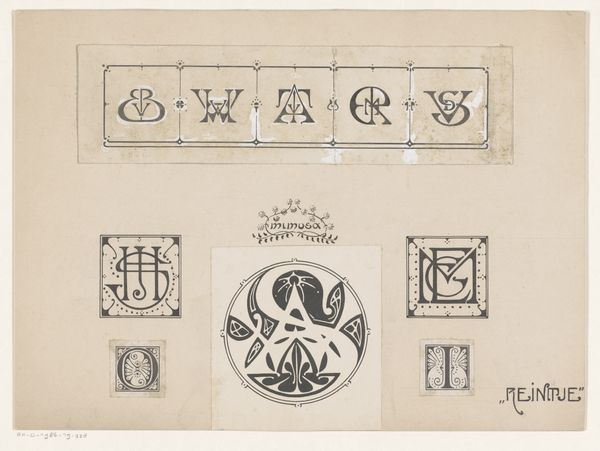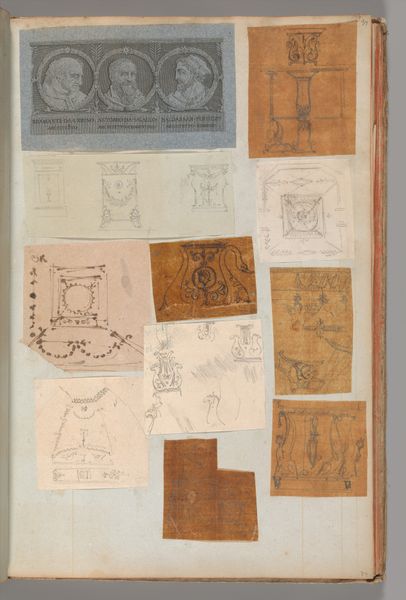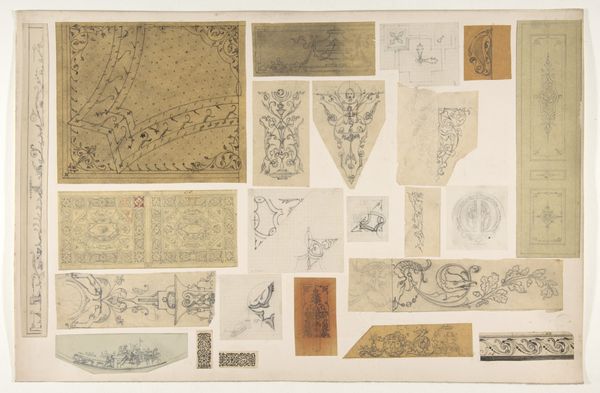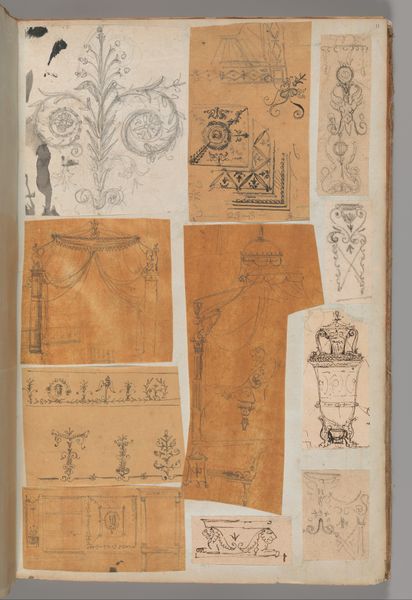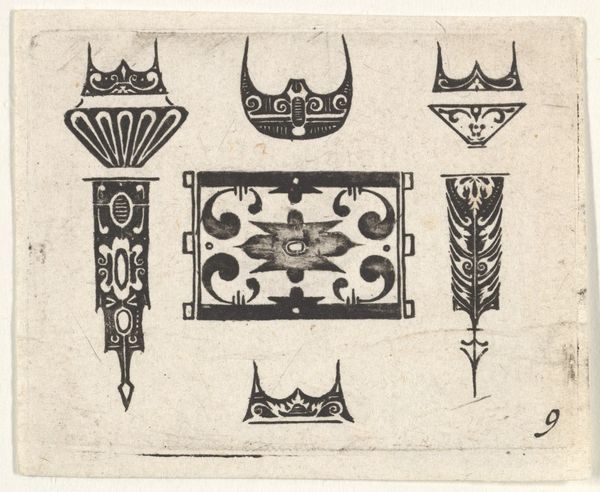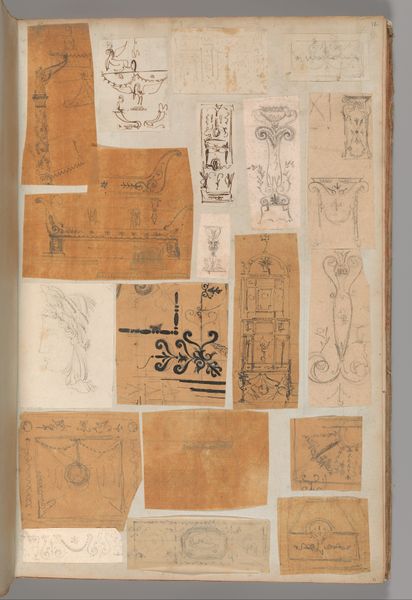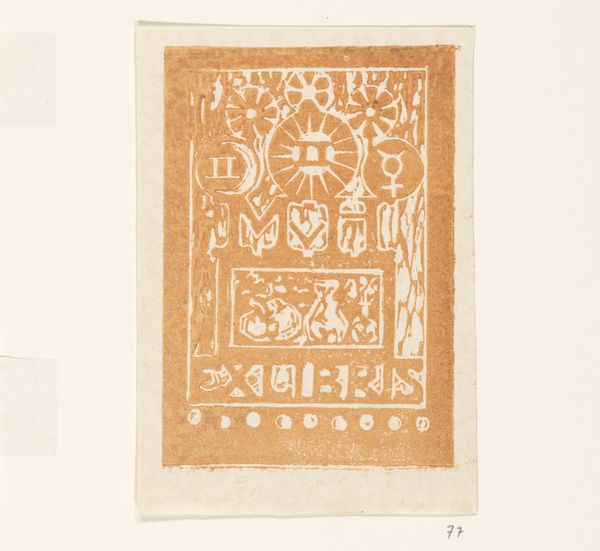
Ontwerp voor ex libris van Johannes Henoch Neethling, en twee andere ontwerpen 1874 - 1945
0:00
0:00
drawing, graphic-art, paper, ink
#
drawing
#
graphic-art
#
art-nouveau
#
paper
#
ink
#
geometric
#
decorative-art
Dimensions: height 244 mm, width 333 mm
Copyright: Rijks Museum: Open Domain
Curator: Here we have a fascinating glimpse into the artistic process. This is a work by Carel Adolph Lion Cachet, titled 'Design for ex libris of Johannes Henoch Neethling, and two other designs'. Created sometime between 1874 and 1945, this sheet holds a collection of ink drawings on paper. It resides in the Rijksmuseum's collection. Editor: It feels like peering into a private sketchbook. The different images are striking in their geometric and organic contrasts—there is almost something slightly mystical in this array of early design explorations. Curator: Absolutely, the Art Nouveau style is strong here, especially in the curvilinear plant motifs that fill one of the proposed bookplates. Notice the bold typography incorporated—how might typography function symbolically, expressing both individuality and institutional power? Editor: The script on the lower-right is so fascinating. Given how rooted in South African history the text clearly seems, I can see a clear tension between individual book ownership versus the academic institution laying claim to learning and literature through images such as these. It’s an assertion of cultural presence. Curator: Precisely. An ex libris, a bookplate, is a mark of ownership and taste, an emblem linking the owner to the book's contents. I read the stylized geometric shapes as an attempt to impose order, classify the intangible knowledge captured between book covers. Editor: I also appreciate that all these designs hint at the broader market culture for print material at the time. Considering its materiality, one also recognizes the socio-economic realities of the early 20th century book market, the value placed on graphic art to visually brand and differentiate reading material from competing businesses or even national viewpoints. Curator: Cachet so beautifully balances commercial imperative with the impulse for aesthetic delight. One must also consider the larger forces around cultural heritage preservation when analyzing these objects. Editor: These studies act as tiny portals. Beyond aesthetics, Cachet offers a quiet lesson in design—his creative method involved wrestling with how best to frame identities in times of grand societal shift.
Comments
No comments
Be the first to comment and join the conversation on the ultimate creative platform.
